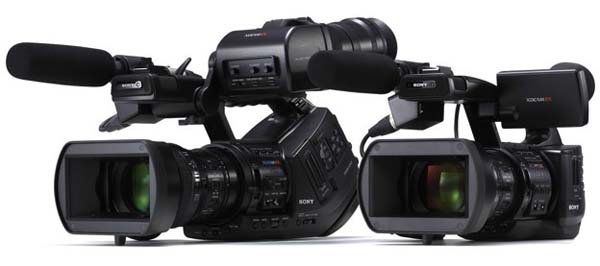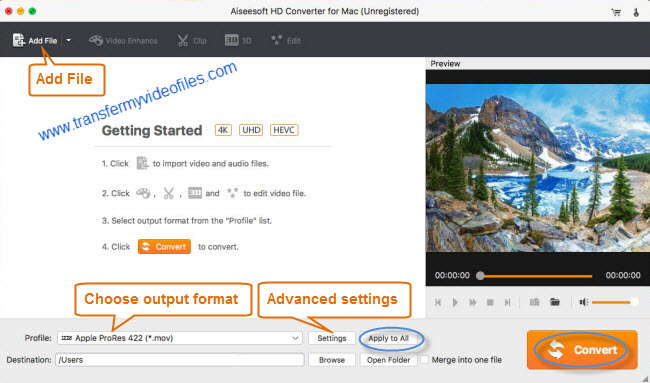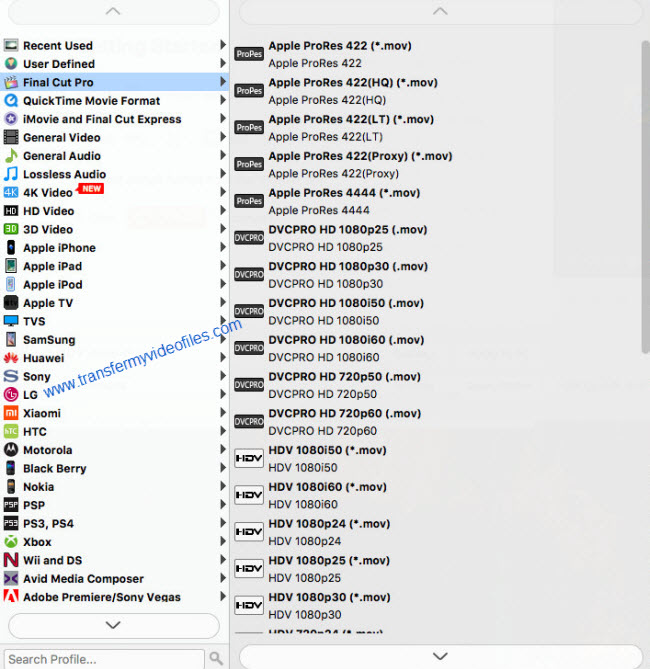For a fast and fluid workflow, videographers sometimes need to convert BPAV to ProRes 422 for use in FCP X. This post introduces an easy and affordable conversion software program to do this.
Is there a way to go directly from the BPAV to ProRes 422 for FCP X editing?
“Hi, fellows, I am working with Sony EX3 shooting 1080p HQ. I have downloaded XDCAM Transfer and Sony Drivers. I can’t get FCP X to import BPAV files directly to the program. How can I transcode the BPAV to ProRes 422, which would ensure a smooth editing workflow in FCP X? Any suggestions or insights that you could provide would be greatly appreciated. Thanks.”

Our quick answer
You will need to use conversion software to convert BPAV to ProRes. HD Video Converter for Mac will do the trick. It features powerful ability to transocde Sony’s XAVC 4K/2K/HD and XAVC S 4K/2K/HD files as well as XDCAM, XDCAM HD, XDCAM EX and Canon’s XF-AVC footage to edit-friendly format fit for NLEs. Read on to find a quick guide on how to encode BPAV to ProRes 422 for FCP X editing.
Here’s what you need
HD Video Converter for Mac

[Guide] How to encode BPAV video files to ProRes 422 for FCP X editing?
Download, install and run HD Video Converter for Mac, then follow these steps:
Step 1: Run HD Video Converter for Mac as a professional BPAV to ProRes 422 Converter. When its main interface comes up, click ‘Add File’ to load source video to it.

Step 2: Select ‘Apple ProRes 422 (*.mov)’ as output format for opening with FCP X
From the ‘Profile’ list, move to ‘Final Cut Pro’ catalogue, and select ‘Apple ProRes 422 (*.mov)’ as target format. Apple ProRes is the best suited editing codec for FCP X. When loading them into Final Cut Pro X, you needn’t wait for a long time for rendering.

Important: If you’ve loaded a number of video clips to do batch conversion, please do remember ticking off ‘Apply to All’ option before you start.
Step 3: Adjust video and audio settings (for advanced users)
If necessary, you can click ‘Settings’ button and go to ‘Profiles Settings’ panel to modify video and audio settings like video encoder, resolution, video bit rate, frame rate, aspect ratio, audio encoder, sample rate, audio bit rate, and audio channels. 3D settings are also available.
Step 4: Click ‘Convert’ to start BPAV video files to ProRes conversion.
Step 5: Click ‘Open Folder’ to get generated ProRes 422 QuickTime files for transferring and editing in Final Cut Pro X with optimum performance.
To import the transcoded files into Final Cut Pro X. navigate to File > Import > Media. In the window that comes up select your transcoded ProRes clips. DO NOT check “Create Optimized Media” OR “Create Proxy Media”. Both of these check boxes are unnecessary because we already converted the media to ProRes which means Final Cut Pro X can use the footage without “optimizing” it. Checking this box would create a redundant and time consuming second transcode of your footage.
You’re now ready to edit!
Related posts
How to transcode BPAV files to QuickTime MOV on Mac?
BPAV to iMovie-how to import and edit BPAV files in iMovie?
How can I import Sony XDCAM EX MP4 footage to Premiere Pro?
What’s the best workflow between Sony PMW-EX3 and Avid MC?
